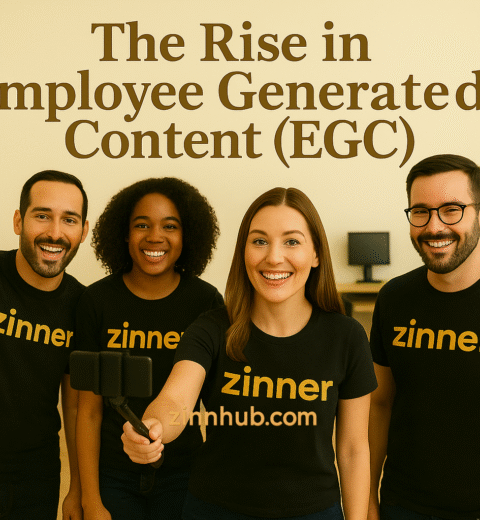Table of Contents
- 1. Keyword Research: Digging Deeper Than Your Competitors
- 2. On-Page Optimisation: All the Details That Actually Gets Results
- 3. Technical SEO: Not Just for Developers (But Yes, Some Geekery)
- 4. Link Building: Here’s What Works (and What Doesn’t)
- 5. Local SEO: Still a Hidden Gem
- 6. Analytics & Measurement: Don’t Just Guess
- 7. Entity SEO & Topical Authority: Be the Wikipedia for Your Niche
- 8. AI, Zero-Click, and the Future: Adapt or Fade
- 9. Common SEO Mistakes (and How to Avoid Them)
- Chasing Spammy Backlinks
- Neglecting Technical SEO
- Thin or Duplicate Content
- Ignoring Search Intent
- Over-Optimising (Keyword Stuffing)
- Forgetting Mobile Users
- No Internal Linking Strategy
- Ignoring Core Web Vitals
- Neglecting Local SEO
- Not Measuring Results
- Letting Content Go Stale
- Missing or Weak Meta Tags
- Skipping Accessibility
- Letting Plugins or Scripts Slow Your Site
- 10. Essential SEO Tools To Use
- 11. Your Practical Action Plan
- Natalie’s Thoughts
We’ve all done the checklists, the SEO jargon, and even bought a few spammy backlinks (never again). If you want a full, real-world look at everything that matters in SEO—especially in 2025, where AI is rewriting the rules daily—here’s what I actually do, what’s worked, and the honest lessons from what hasn’t. Nothing left out, no secrets kept.
1. Keyword Research: Digging Deeper Than Your Competitors
Every “how to SEO” guide says, “Do keyword research.” Here’s how I do it so it’s not just another spreadsheet:
Competitor Gap Analysis
First thing, list your top 3–5 real-world competitors. Not the biggest sites in the world, but businesses like yours who actually get customers. Drop their URLs into SEMrush or Ahrefs. Export their top keywords and see where you’re not ranking—these are “gap” opportunities. I remember spotting a term on a rival’s site, rewrote a guide, and within a month, that page was bringing in qualified leads (and a few copycats).
Customer-First Language
Listen to what your buyers actually say—emails, calls, reviews, even angry rants on social media. If everyone says “website speed up” and you’re writing “performance optimisation”, you’re missing the real search terms.
Long-Tail Wins
People type weirdly specific things now: “best e-commerce SEO checklist 2025”, “how to remove fake reviews London”. These bring in visitors ready to act. Use Google’s autocomplete, “People Also Ask”, and just ask your clients what they searched to find you.
Intent, Always
Every keyword has a mood:
- How-to = they want info
- Buy = they want to, well, buy
- Compare = they’re weighing options
If your site covers all the moods, you catch more of the right people.
Tools I Use (And Recommend):
- SEMrush and Ahrefs for gaps and keywords
- SurferSEO or Clearscope to see what “related topics” Google expects on your page
- AnswerThePublic for question ideas
- Google Trends for what’s suddenly popular (sometimes surprising)

2. On-Page Optimisation: All the Details That Actually Gets Results
Title Tags & Meta Descriptions
Title under 60 characters, keyword close to the front, and something click-worthy.
Meta description? Not a throwaway. Promise a benefit or answer, mention your main keyword, and stick to 155ish characters.
Headers—Think Like Wikipedia
One H1, lots of H2s and H3s. Each section is clear, logical, and easy to skim. I’ve found if you write your headers like mini-questions (“How do I speed up my site in 2025?”), you’ll hit more featured snippets.
Internal Linking, Cluster Style
Don’t just link randomly—build content clusters. Have a big “pillar” post, then write “cluster” pages diving into subtopics. Link everything back to the pillar and between clusters, like a spiderweb. Google loves it, and so do readers who want to go deeper.
E-A-T (Expertise, Authoritativeness, Trustworthiness)
- Author bios with real credentials (don’t hide behind “admin”)
- Link to official or expert sources (no spammy references)
- Keep your content fresh—update stats, dates, and guides at least once a year
Unique, Original Content
Google (and real readers) want something they can’t find anywhere else. Make sure every page or post offers original value—don’t just rewrite or spin existing content.
- Share unique insights, stories, or data from your own experience.
- Avoid copying content across your site, or from competitors.
- Use tools like Siteliner or Copyscape to check for accidental duplication.
👉Read the Must-Have Content Creation Tools blog
Schema: Not Optional
- Use JSON-LD (it’s easier and what Google wants)
- Mark up your articles, FAQs, products, reviews, and organisation
- Use Google’s Rich Results Test before and after you publish
User Experience Tips
Short paragraphs, bullet points, loads of whitespace, images/screenshots that show (not just stock photos), and a table of contents for longer guides.

3. Technical SEO: Not Just for Developers (But Yes, Some Geekery)
Core Web Vitals (2025 Update)
- LCP: Optimise your biggest image or banner, use WebP, lazy-load below-the-fold images, and go for a good CDN (Cloudflare is my go-to, even the free plan is great).
- INP: This is new! Test your site in PageSpeed Insights. Cut bloaty plugins, minimise JavaScript, and try not to go wild with popups or widgets.
- CLS: Set image and video size attributes, avoid ads that jump the page, and use tools like Lighthouse for a quick check.
If your developer’s never heard of INP (Interaction to Next Paint), that’s a red flag. It replaced FID (First Input Delay) in 2024—get your site audited for it!
JavaScript & CDN Tweaks
If you’re not technical, just ask your dev to defer non-essential scripts, remove anything not needed, and serve static files from a CDN. Every millisecond helps.
Structured Data/Schema Deep Dive
Mark up as much as makes sense: FAQs, breadcrumbs, events, reviews, products, business info, etc.
Use Google’s Structured Data Markup Helper if you’re new.
International SEO (hreflang, the Right Way):
If you’ve got an audience across countries or languages:
- Add
hreflangtags to each page so Google knows which language/region each version is for. - Use absolute URLs.
- Check in Google Search Console for “International Targeting” errors.
XML Sitemap & Search Console Submission
Don’t skip the basics: generate an XML sitemap that lists all your important pages, and submit it through Google Search Console (and Bing Webmaster Tools, if you care about Bing).
Most WordPress SEO plugins—like Yoast or RankMath—create and update your sitemap for you. After you submit it, check back in Search Console to catch crawl or indexing issues fast.
Caching
Set up both browser and server-side caching to speed up repeat visits and reduce server load.
Many hosts offer built-in caching. On WordPress, plugins like WP Rocket or W3 Total Cache make it easy to get started. Caching alone can shave crucial seconds off your load times.

4. Link Building: Here’s What Works (and What Doesn’t)
Backlinks—links from other reputable sites to yours—are still one of Google’s strongest signals of trust and authority. But not all links are created equal. I’ve been burnt by dodgy link schemes in the past, so here’s what actually works in 2025:
Create Shareable, Valuable Content
Guides, data, or resources so useful that others naturally want to reference them. Example: If you run a fitness studio, a comprehensive guide like “10 Effective Exercises for Weight Loss” could become the go-to for bloggers in your space.
The more unique and actionable your content, the easier it is to attract quality links without begging.
Skyscraper Technique 2.0—How I Really Use It
- Find a mega-popular post in your field (Ahrefs “Best by Links” is gold for this).
- Build something better—longer, up-to-date, more visuals or real data.
- Make a list of everyone linking to the original (Ahrefs/SEMrush can export this).
- Send a short, personal email. I always keep it casual:
“Hey [Name], saw you linked to [Old Guide]. I just published an updated version with some fresh stats and real-world examples—thought it might help your readers.”
Don’t hard sell, and expect most people to ignore you. But a few good links matter more than dozens of rubbish ones.
Resource Page Link Building
Use Google searches like inurl:resources “digital marketing” or intitle:links “SEO tips” to find curated lists in your niche.
Check their submission guidelines if they have them, and be super relevant—if your guide doesn’t fit, don’t pitch it.
Guest Posting on Authority Sites
Contribute genuinely valuable articles to respected industry blogs. Add a natural, relevant link back to your site in your bio or within the content.
Tip: Guest posting only works if your content actually benefits their audience—never just for the link.
Digital PR (DIY Version)
No PR agency needed. Run a small survey (even Google Forms or LinkedIn polls), write up your findings, and pitch to journalists and bloggers. Even just sharing unique stats or new “state of the industry” numbers gets attention.
AIDA Email Framework (But Keep it Human)
- Attention: Use a personalised subject line (not “Outreach” or “Collaboration”)
- Interest: Show you know their work (“Loved your recent post on X…”)
- Desire: Explain why your content adds value (“We’ve added new data no one else has”)
- Action: Ask directly but politely (“Would you consider adding us to your resources?” or “Would love your feedback, even if you don’t link.”)
What NOT to Do (Seriously):
- Never buy links from unverified sources or dodgy DMs.
- Don’t join random link exchanges.
- If a link looks spammy, it probably is.
- Forget the shortcuts. Most will hurt your rankings in the long run.

5. Local SEO: Still a Hidden Gem
If your business serves a specific area, Local SEO is your ticket to showing up in Google Maps, “near me” searches, and local directories. Most businesses think they’ve done it—very few actually have. Here’s what works in 2025:
Google Business Profile (GBP) Mastery
- Fill out every single section: services, Q&A, real photos (inside and out), products if you have them.
- Keep your opening hours and contact details up to date—nothing puts off customers (or Google) faster than old info.
- Reply to every review—positive, negative, or just “star only.” Tip: Show you care and Google takes notice. Thank people for good reviews, and respond to negative ones with empathy and a solution.
Citations & NAP Consistency
- Check all your listings: Google, Yelp, Facebook, Yellow Pages, industry-specific directories.
- Your business name, address, and phone number (NAP) must be identical everywhere—no missing suite numbers, old phone numbers, or “creative” spellings.
- Update any incorrect listings right away—Google cross-references everything.
Geo-Targeted Keywords & On-Page Local Signals
- Include your city or region naturally in your website’s titles, meta descriptions, H1s, and even URLs where it fits.
- Example: Instead of just “Contact Us,” use “Contact Your Manchester SEO Agency” or “Best Coffee in Seattle – Visit XYZ Coffee Shop.”
- Local landing pages: Create unique pages for each key service area or town you serve.
Local Content That Actually Works
- Blog about local events, awards, charity drives, or news that matters to your area.
- Partner with nearby businesses for cross-promotions, local guides, or even joint events. These collaborations often lead to natural, local backlinks.
Actively Request Reviews Everywhere
- Don’t wait for reviews—ask happy customers to share their feedback on Google, Yelp, Facebook, or TripAdvisor (choose what’s relevant for your industry).
- Positive reviews boost your rankings and act as powerful social proof.
- Set up simple reminders (in person, email follow-up, or with a sign at checkout) to nudge customers to leave a review.
Pro tip:
Local SEO is a long game. Consistent NAP info, fresh reviews, and geo-targeted content will stack up over time. Most competitors are lazy about this—do it right, and you’ll outrank them before they even notice.

6. Analytics & Measurement: Don’t Just Guess
KPIs That Matter:
- Organic traffic (Google Analytics, Looker Studio)
- Keyword rankings (Ahrefs/Semrush or Search Console)
- Click-through rates (CTR) on your top pages (Search Console)
- Conversion rates (goal completions, calls, form fills)
- Page speed and Core Web Vitals scores
Monthly Health Checks:
- Crawl errors (fix in Search Console)
- Backlink profile (disavow the junk)
- Duplicate content (Siteliner or Screaming Frog)
Quarterly Reviews:
- Deep-dive into what’s working and what’s tanking
- Review competitor moves (new content, links, features)
- Plan new pillar and cluster topics
Advanced Analytics Setup:
- Track events and goals in Google Analytics (downloads, signups, purchases)
- Build a dashboard in Looker Studio so you don’t get lost in spreadsheets

7. Entity SEO & Topical Authority: Be the Wikipedia for Your Niche
Content Clusters, Wikipedia-Style Linking:
- Write one big “pillar” (like this) covering a broad topic.
- Write lots of detailed supporting posts (how-tos, case studies, FAQs).
- Link every cluster post to the pillar, and between clusters where relevant.
- Reference credible outside sources, but show your own expertise (original stats, unique insights).
Why? Google now looks for entities and topics, not just keywords. If your site looks like the best library on your topic, you’ll outrank bigger, generic sites.
8. AI, Zero-Click, and the Future: Adapt or Fade
AI Overviews & Zero-Click:
Google’s giving more answers right in the search results (AI summaries, featured snippets). This means sometimes, users never even visit your site.
What do you do?
- Make sure your answers are front and centre—clear, scannable, and up top
- Use FAQ schema, bullet points, and tables where it helps
- Offer something people can’t get in a snippet (unique downloads, tools, or real-world examples)
Voice & Answer Engine Optimisation (AEO):
- Phrase headers and intros as questions people would actually ask (“How do I fix slow website speed?”)
- Write answers that sound like a helpful friend—not a manual
- Mark up with schema (FAQ, HowTo, Q&A)
9. Common SEO Mistakes (and How to Avoid Them)
Nobody gets everything right the first time—and in SEO, the wrong move can set you back months. Here are the biggest mistakes I’ve seen (or made myself) that are 100% worth dodging:
Chasing Spammy Backlinks
Buying cheap backlinks, swapping links in sketchy groups, or dumping your URL on random forums might boost traffic for a week—but Google always catches up. I tried one of those “500 backlinks for $10” deals. Short-term spike, long-term penalty. Never again.
Neglecting Technical SEO
Broken links, missing sitemaps, slow loading, or no SSL can kill your rankings—no matter how great your content. A missing SSL once cost a client weeks of traffic—fixed it, and the “Not Secure” warning vanished overnight.
Thin or Duplicate Content
Publishing near-identical pages, or short “filler” content, tells Google your site isn’t worth ranking. I once spun out 10 versions of a service page—every one dropped off the map.
Ignoring Search Intent
Writing what you want instead of what people are actually searching for leads to wasted effort. My “industry trends” post got ignored until I rewrote it as a “how to” guide based on real user questions.
Over-Optimising (Keyword Stuffing)
Stuffing keywords into every line not only reads horribly; it’ll get you filtered by Google.
Early on, I overused keywords in headers—my ranking stalled until I dialled it back.
Forgetting Mobile Users
Most traffic is mobile. If your site only works on desktop, you’re losing half your audience.
Saw a beautiful desktop site tank because the mobile menu didn’t work—fixed it, rankings recovered.
No Internal Linking Strategy
Publishing content but never linking between posts leaves “orphan” pages Google can’t find.
After linking up my best posts, organic traffic rose across the board.
Ignoring Core Web Vitals
Don’t let slow sites or layout shifts kill your rankings—always check LCP, INP, CLS, and more.
Optimising INP pushed my blog up in mobile searches.
Neglecting Local SEO
Not claiming your Google Business Profile or fixing inconsistent business info means missing out on map pack traffic. A wrong phone number on one directory hid a client from local search for months.
Not Measuring Results
If you’re not tracking conversions, leads, or sales—not just visits—you’ll never know what’s working.
Setting up proper analytics finally showed me which blogs drove real clients.
Letting Content Go Stale
Old posts with broken links or outdated info can lose rankings fast.
I revived an old post with new stats—rankings came right back.
Missing or Weak Meta Tags
Default titles and meta descriptions = lower click-through rates.
Custom metas boosted my CTR by 15% overnight.
Skipping Accessibility
No alt text, poor contrast, or vague links hurt users and rankings.
Added proper alt text to product images—suddenly, Google Images sent steady traffic.
Letting Plugins or Scripts Slow Your Site
Loading every analytics or chat widget you find can drag your site speed down.
Swapped a heavy analytics script for a lighter one—load times and rankings improved.
Pro tip:
Don’t panic if you’ve made a few of these! Every SEO pro has at some point in their career. The difference is, now you know what to look out for—and how to fix it.
10. Essential SEO Tools To Use
- SEMrush/Ahrefs: For keywords, link gaps, and spying on the competition
- SurferSEO/Clearscope: For on-page content recommendations and topic relevance
- Screaming Frog: Site audits and finding technical problems
- Jasper/ChatGPT/Claude: Fast first drafts and ideation (but always edit by hand)
- Google Search Console/Analytics/Looker Studio: Tracking what’s working, without getting lost in the weeds
👉 Read The Best SEO Tools for Every Need in 2025
11. Your Practical Action Plan
Weeks 1–2:
- Run a competitor gap and keyword analysis
- Refresh titles, meta, headers, and add internal links
- Set up or tidy your analytics
Weeks 3–4:
- Work on site speed (images, plugins, CDN) and mobile usability
- Add schema, test in Google’s Rich Results tool
Month 2:
- Publish new content clusters
- Begin advanced link outreach (Skyscraper, resource page, AIDA)
- Polish your GBP/local listings
Month 3 and Ongoing:
- Review KPIs, update old content
- Track new keyword trends
- Try new tools and experiment with new content angles
Natalie’s Thoughts
SEO can feel like a full-time job (and sometimes, it actually is). If you’re already wearing a dozen hats, why not hand this one to someone who eats, sleeps, and breathes search engine optimisation?
I’d recommend hiring a Zinner SEO freelancer from Zinn Hub. They’re not just ticking boxes—they’ll actually roll up their sleeves and dig into what your business needs. Think proper keyword research, technical fixes you probably didn’t know you needed, building the right backlinks (not just random ones), and keeping an eye on your rankings so you don’t have to.
That way, you can focus on your business, and let your SEO Zinner handle the Google headaches. Whether you need a full site overhaul or just want to climb a few spots, there’s someone on Zinn Hub who’s done it before—and can do it for you.
SEO’s always moving. The stuff that worked last year? It might be stale now. But the basics—serving users, being trustworthy, building solid relationships, and tracking your results—don’t change.




